In pictures: The other Wales
- Published
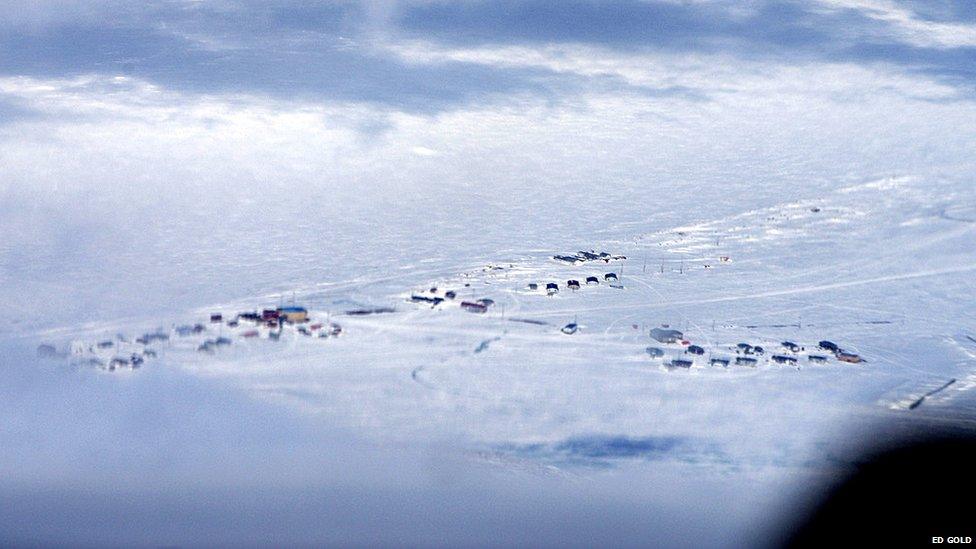
The small remote community of Wales sits on the westernmost tip of the US, on the Seward Peninsula of Alaska, overlooking the Bering Sea. Photographer Ed Gold spent a number of weeks living with and documenting the small Inupiaq community, and here we share some of his work.

From the shores of Alaska, you can see the Diomede islands. The smaller one is owned by the US, the other - just visible in the background - by Russia.

During the Cold War this was the front line between the two super-powers, with US military outposts constantly on the lookout. This is part of the White Alice Communications System at Tin City, not far from Wales itself.
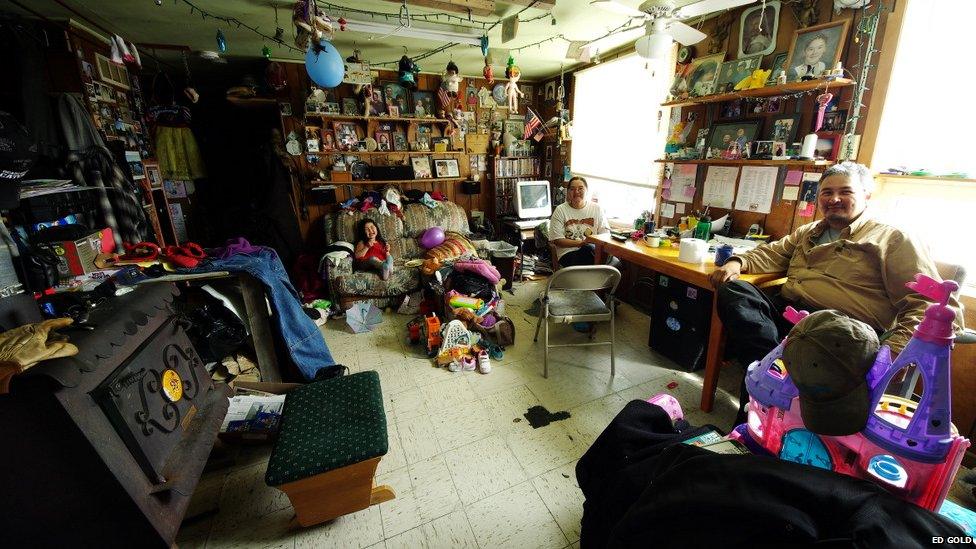
Today Wales, one of the oldest communities in the region, is home to fewer than 150 residents. The homes have a series of doors, usually three, which you have to pass through to exit, ensuring the interior remains warm and draught-free.
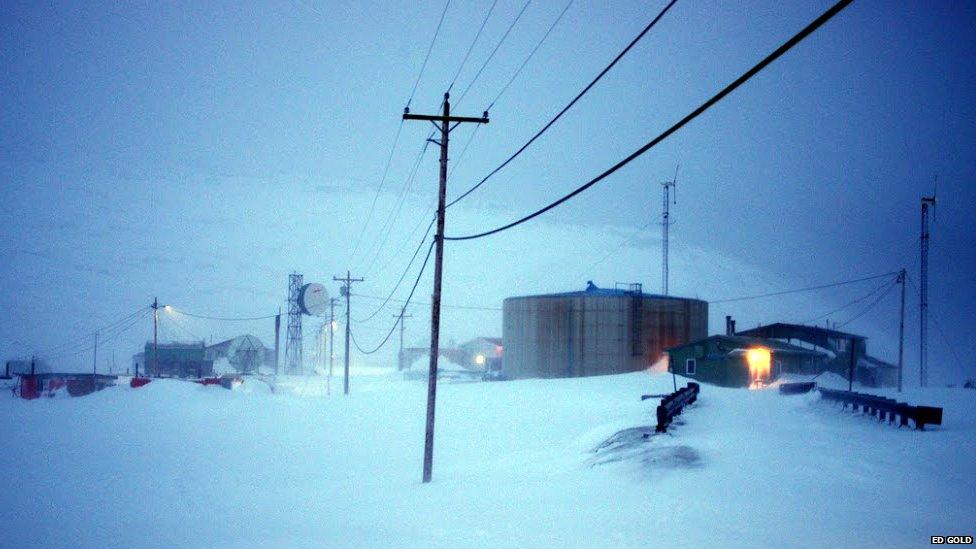
The area was named Cape Prince of Wales in 1778 by Capt James Cook for the Prince of Wales. The Alaskan Inupiaq language name for Wales is Kingigin, named for the mountain that rises above it. Wales people refer to themselves as Kingikmiut, "the people of Kingigin".
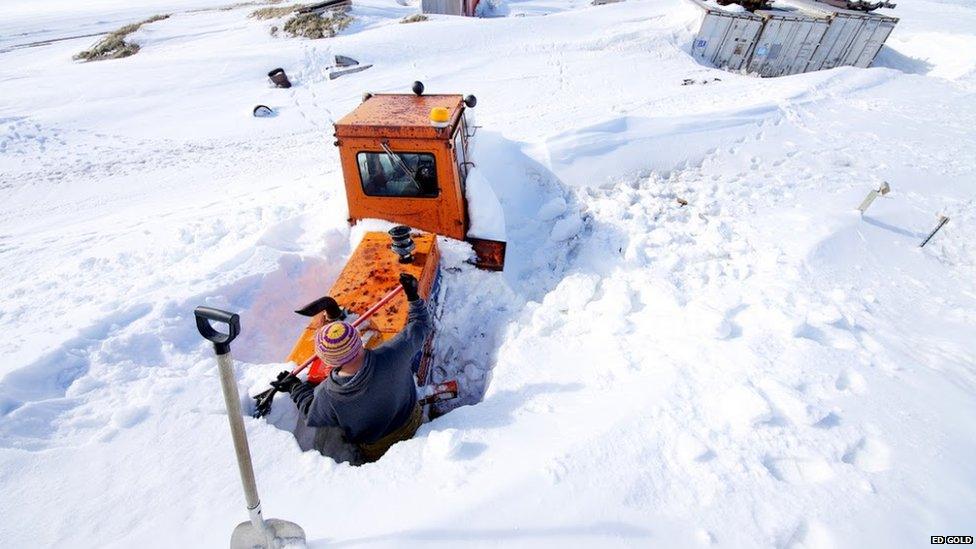
Keeping the roads clear and machinery running is also a challenge. Here, the snow is removed from a digger so that a heater can be plugged in and run overnight, ensuring it can be started in the morning.
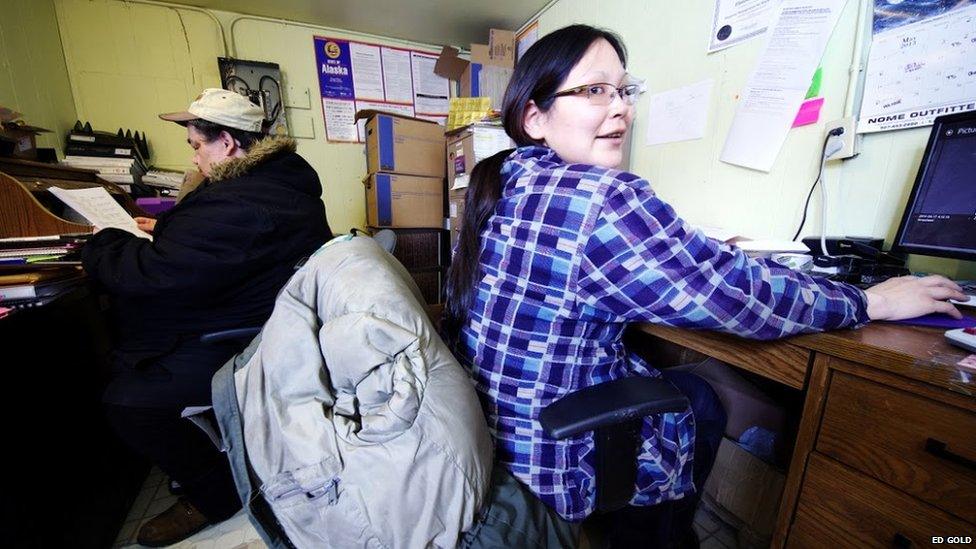
Rachel Seetook was born in Nome but lives in Wales because she has family here and likes the fact it is a "dry" town. Some villages voted to be "wet" with alcohol or "dry" without, she said.
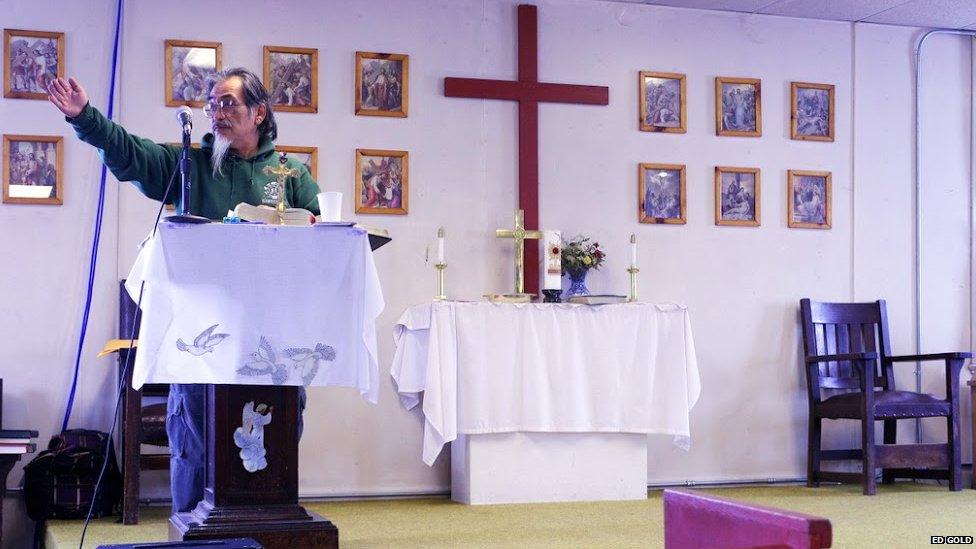
Gilbert Oxereok became pastor in 1996, having been asked to take over by the former incumbent. Gold said: "I like Gilbert's style, at the end of the service he simply signs off by saying, 'Thanks be to God - I am doooone.'"
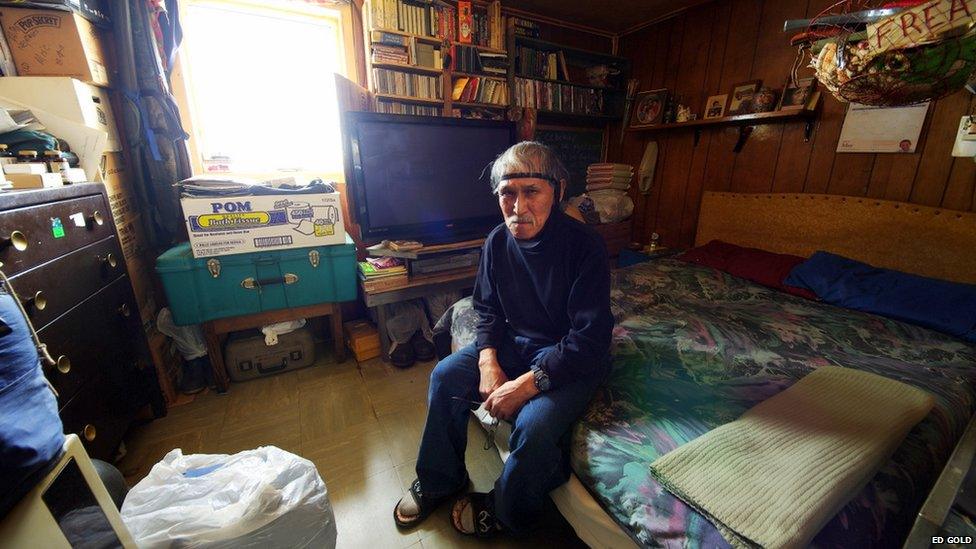
Alaska has a high proportion of military veterans, and Wales is no exception. One of those, Dan Omedelena, was a helicopter door gunner who flew 298 combat missions in Vietnam and won the Air Medal.

The town has a school run by Roxie Quick, who is keen to ensure the children have a good education and high expectations. "I photographed many classes, many great students with their teachers and witnessed the excellent teaching which helps the future of the community to excel," said Gold.
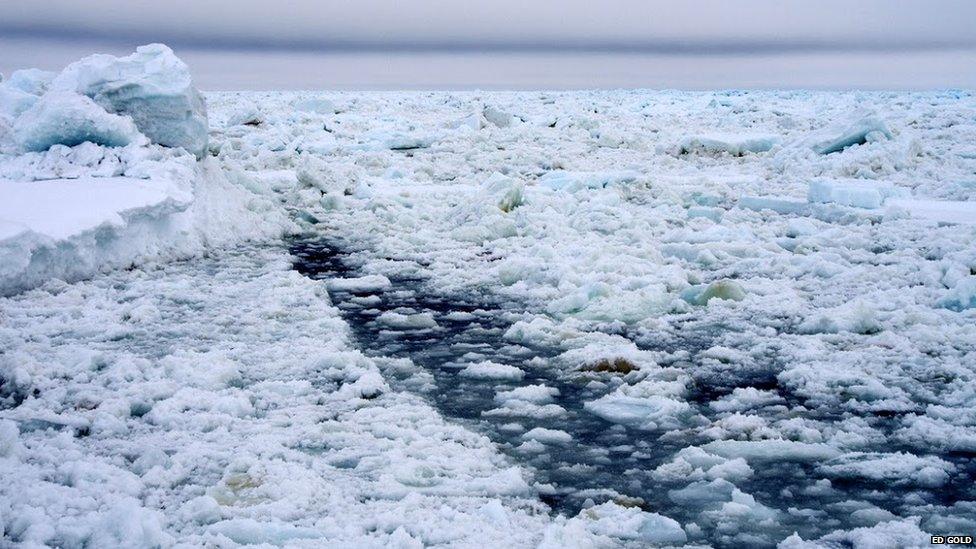
This is the sea-edge pressure ridge, where thick ice meets water. Gold said: "I am told it's about 50ft [15m] deep here and the currents are dangerously fast. In the Inupiaq language there are more than 100 different names for sea ice, to explain changing conditions."
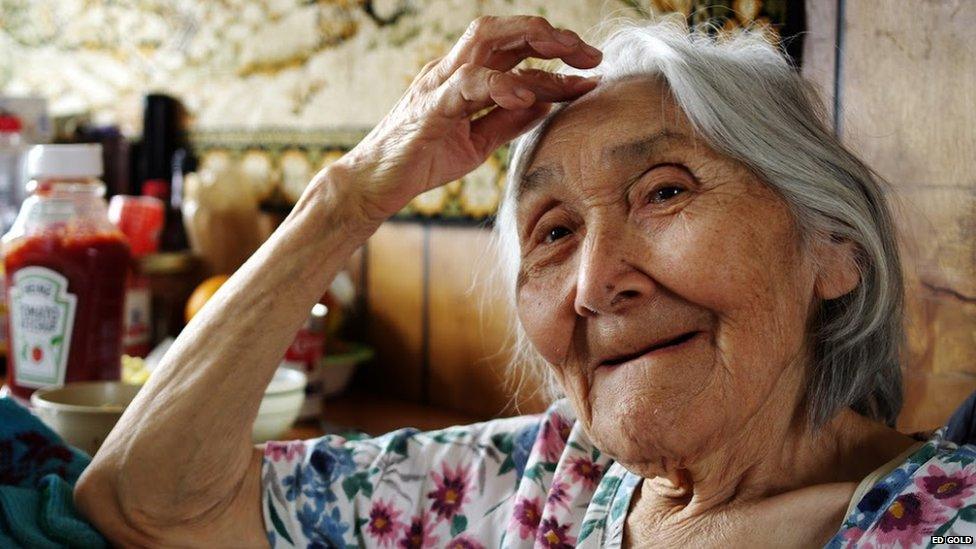
Faye Ongtowasruk was born in 1928 and is one of a handful who still use wood found on the shoreline to heat their home. Once a year a barge brings about 60,0000 gallons (270,000 litres) of diesel to Wales for its three generators
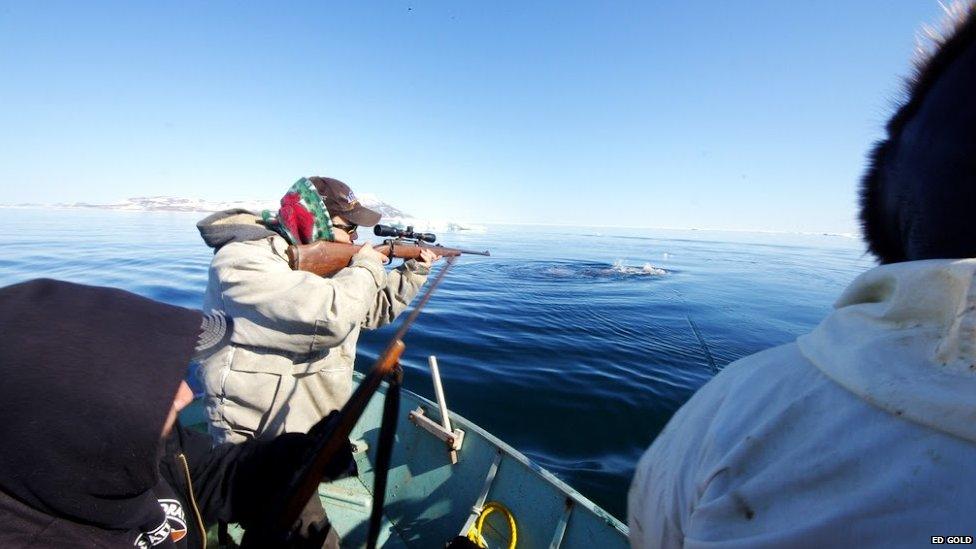
"It's distinctly noticeable that people are happier when it's hunting season, they start to work together and feel a sense of pride and purpose," said Gold. "Oogruk [bearded seal] tastes similar to beef and a lot better than supermarket meat, it doesn't contain anything artificial."
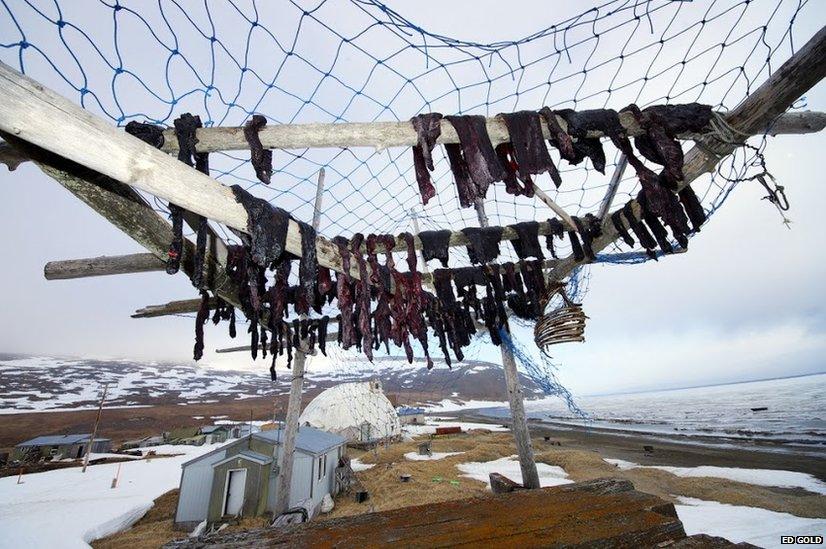
The meat is hung from platforms to dry and cure and to keep it away from predators. These days there is little hunting, as the town is well supplied and has a number of shops.
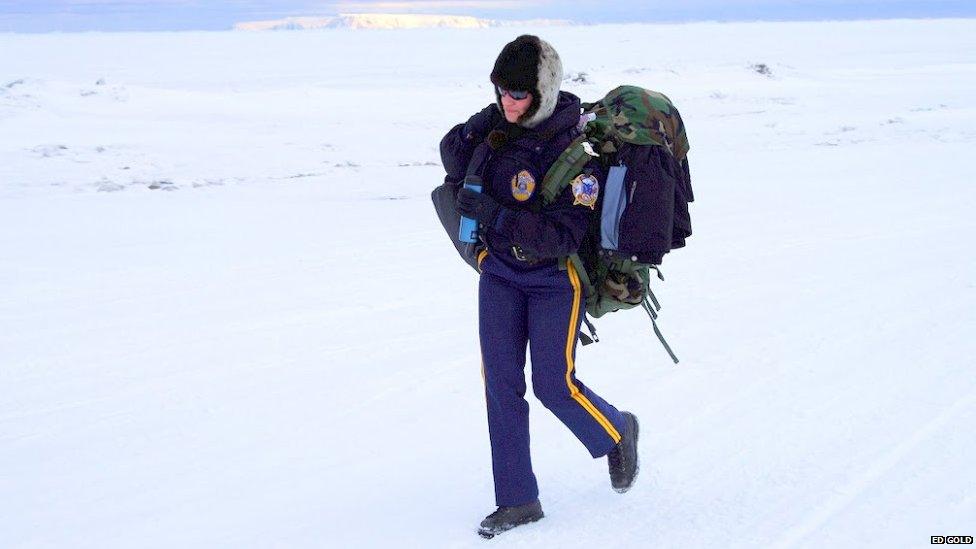
Alaskan state trooper Aileen Witrosky walks along the beach in the morning, from her overnight accommodation to the school in Wales where she will talk with students before leaving for her next visit - to other villages in her jurisdiction.
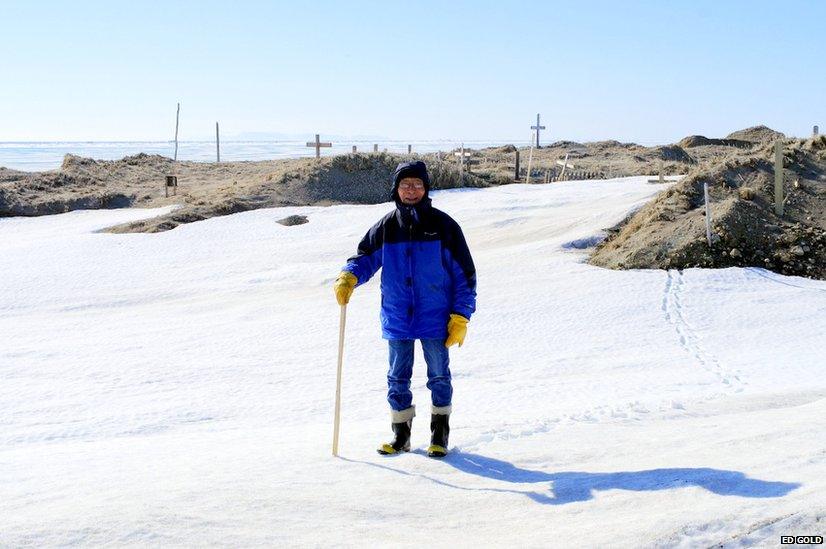
Gold met Pete Sereadlook at the cemetery, who told him, "I love Wales, I'm going to die here, my parents are here, in the ground." In the background there is a large cross to mark those who died from the 1918 influenza pandemic, which is said to have reduced the population by half.
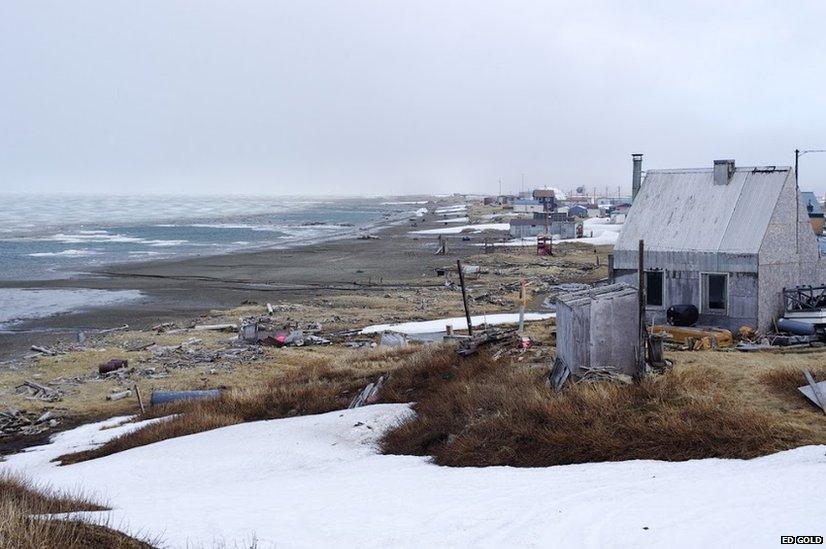
As Gold's stay draws to a close, the snow has thawed. This is Gilbert's house, whose parting words are from his father: "Always do what you say you are going to do, otherwise you break meaning." Gold draws from this a need to create a photography book of Wales for its people and the world.